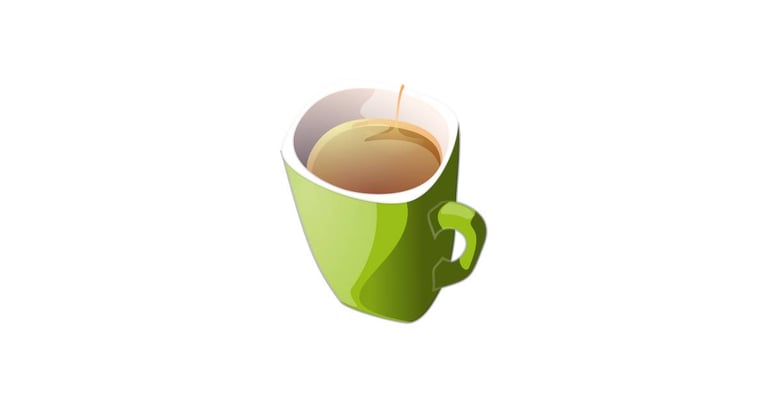11 Most Popular Types of Tea
Explore scents and taste sensations to fit any circumstance as you examine the 11 most popular varieties of tea, ranging from rare oolong delights to calming green and strong black.
ELEVEN (11)


Cup of Tea (credit: pixabay)
Tea has a special way of extending into your daily schedule and transforming everyday events into little routines. On a busy Monday morning, I unintentionally picked up a package of Jasmine tea rather than my regular black. The first sip was smooth, flowery, and a little sugary; it was like a calm moment in the middle of craziness. I became aware of how different tea can be and how every variety has an individual charm. The following is an approach to 11 most popular teas, featuring their flavour profiles as well as historical background, so you can choose one for any occasion if you have ever been exhausted by the countless options in your neighbourhood store or online.
Green Tea
Origin: China & Japan 🇨🇳🇯🇵
A cup of green tea is comparable to a breath of fresh air. From China's Dragon to Japanese Sencha it has faint vegetable overtones and is somewhat astringent. The powdered form of matcha has a luxurious, creamy flavour that is perfect for a mid-afternoon pick-me-up or a peaceful morning habit. Recommendation: To avoid a harsh taste, brew at moderately lower heat.
Black Tea
Origin: India, China, Sri Lanka 🇮🇳🇨🇳🇱🇰
For those who want an extra dose of caffeine without the bitter taste of coffee, black tea is the preferred option. Darjeeling has a light, muscatel quality, while Assam has strong, malty aromas ideal for the morning meal. Citrusy vibrancy is added with Ceylon tea. A cup of black tea could be similar to a liquid pep talk if your mornings resemble crawling through molasses.
Oolong Tea
Origin: China & Taiwan 🇨🇳🇹🇼
The richness of oolong, which lies between green and black tea, can be nearly mystical. Dong Ding has a delicate toasted flavor, while Tieguanyin delivers orchid-like blossom aromas. If you desire a tea that transforms with every brew, a small experience without departing your kitchen, oolong is ideal.
White Tea
Origin: China (Fujian Province) 🇨🇳
White tea is flavorful but sophisticated. White blossoms with silver needles are delicate, gently aromatic, and energizing. White tea might be compared to that peaceful companion who makes a positive impact but does not require recognition. It is particularly beautiful during warm summer afternoons.
Pu-erh Tea
Origin: China (Yunnan Province) 🇨🇳
Pu-erh is a tea that resembles a great wine. Shou (ripe) pu-erh gives smooth, earthy richness, whereas Sheng (raw) pu-erh has a strong, slightly astringent edge. Pu-erh is the tea you should attempt if you have ever desired to experiment with aged flavours. It can also be combined with rich foods to equalize flavours; I have attempted this in many different supper trials.
Yellow Tea
Origin: China (Hunan & Sichuan Provinces) 🇨🇳
Yellow tea is hard to find elsewhere than specific shops. The golden needle of China, Junshan Yinzhen, is mellow, buttery, and somewhat tasty. Yellow tea is the type of tea you would provide to wow guests without letting them know how uncommon it is.
Chai (Masala Tea)
Origin: India 🇮🇳
Chai is warm, spicy, and reassuring. It is ideal for cool mornings or as a refreshing drink in the afternoon because it contains cardamom, cinnamon, as well as ginger. Before I began grinding the chai (masala tea) spices by myself, I had trouble preparing it within the household without it tasting like store-bought syrup. It was a tiny accomplishment that made drinking it somewhat of a little moment of joy.
Jasmine Tea
Origin: China 🇨🇳
The tea of jasmine is nearly magical. The green tea undertone adds a delicate sense of freshness while the floral scent uplifts the way you feel. Ideal for instances where you desire a peaceful, reflective cup, such as whenever you are reading by a window on a rainy day.
Chamomile Tea
Origin: Europe & The Mediterranean 🇩🇪🇬🇷🇪🇬
A cup of chamomile is a divine slumber. It is a traditional nighttime tea due to its pleasant, apple-like scent. A warm cup of chamomile has served as a tiny however dependable source of consolation everytime I have had restless nights.
Peppermint Tea
Origin: Europe & North America 🇬🇧🇺🇸
Peppermint tea is both calming and energizing. It is great following eating or on a hot day because of its refreshing, minty flavour. In order to remain rejuvenated without feeling uneasy because of caffeine, I frequently drink peppermint tea it in the afternoon.
Rooibos Tea
Origin: South Africa 🇿🇦
Rooibos is adaptable, sweet by nature, and perfect for people who do not like caffeine. It can be taken simply, with milk, or even as a starting point for lattes because of its nutty undertones. Rooibos is an indispensable resource for peaceful weekends or evenings and serves as an indication that caffeine-free does not have to equal flavourless.
Summary: Sips of Discovery...Your Tea Adventure Awaits
Tea is more than simply a beverage; it is a way of life, a sensation, and occasionally an unexpected getaway. There is a tea for any circumstance and occasion, whether you like the brilliant freshness of green tea, the calming quiet of chamomile, or the earthy depth of pu-erh. Consider trying a different type of tea every week if you have found yourself caught in a routine; you could find an obsession you did not know exists. For me, that surprising Jasmine tea on a hectic morning showed me that even little things can make everyday days unforgettable. The following time you grab up a box at the shop, keep in mind that the tea leaves contain narratives that await the opportunity to be heated up.
